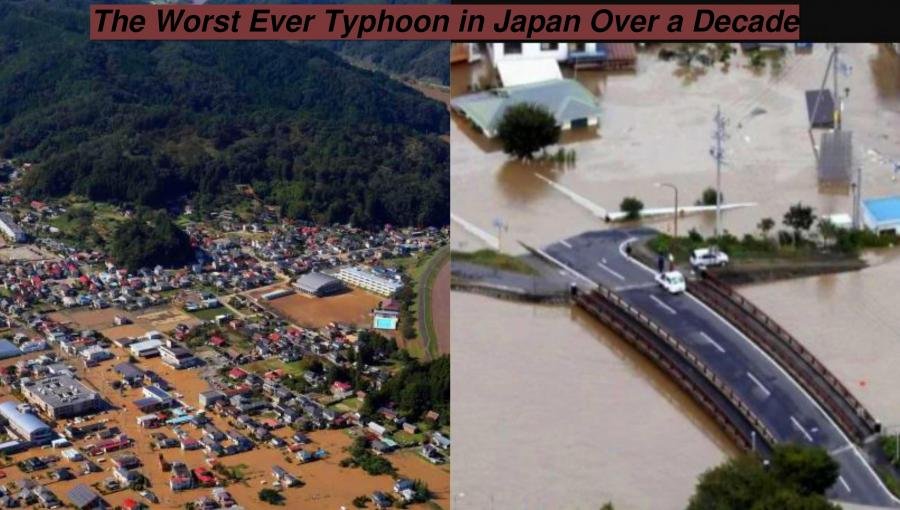JAPAN TYPHOON: Death Toll Reaches 66, Over 15 Missing
By :
Notice: Trying to get property 'fName' of non-object in /home/u589520015/domains/observerdawn.com/public_html/module/Application/view/application/index/news.phtml on line 23
Notice: Trying to get property 'lName' of non-object in /home/u589520015/domains/observerdawn.com/public_html/module/Application/view/application/index/news.phtml on line 23

At least 66 people have died and over 15 were reportedly missing till Tuesday in the worst typhoon that struck Japan for decades. Although, the rescuers slogged through mud and debris in an increasingly grim search for the missing, as thousands of homes remained without power, water or other necessities.
According to the national broadcaster, the NHK , almost fifteen people remain missing since the Typhoon Hagibis smashed into central and eastern Japan till Tuesday morning.
More
than 200 people were injured in the storm, whose name means "speed"
in the Tagalog language.
About
138,000 households were without water while 24,000 lacked electricity, well
down on the hundreds of thousands initially left without power but a cause for
concern in northern areas where temperatures are falling.
The
highest toll was in Fukushima prefecture north of Tokyo, where levees burst in
at least 14 places along the Abukuma River, which meanders through a number of
cities in the largely agricultural prefecture.
At
least 40 people have been killed and hundreds wounded after Japan was hit by
one of the strongest storms the country has seen in decades. Typhoon Hagibis
left a trail of destruction across eight prefectures after it made landfall on
October 12.
Over
25 people died in Fukushima, including a mother and child who were caught in
flood waters, NHK said. Another child of the woman remains missing. Survivors
described how water rose rapidly to chest height in about an hour and mainly at
night, making it hard to escape to higher ground. Many of the dead in Fukushima
were elderly, NHK said.
Residents
in Koriyama, one of Fukushima's larger cities, said they were taken by surprise
by the flooding. Police were searching house-to-house to make sure nobody had
been left behind or was in need of help.
"I
checked the flood hazard map but it didn't have my area as being at risk,"
said Yoshinagi Higuchi, 68, who lives about 100 meters from one levee and
waited out the flood on the second floor of his house as the ground floor
filled with water.
"I
heard there was a flood once before the war, but we just weren't expecting the
water to come over the levee despite all the warnings."
Residents
were warned by the public address systems that are a feature of Japanese cities
and some evacuated to a local elementary school, he added as he and neighbors
piled sodden tatami straw mats and other damaged furniture on the street.
